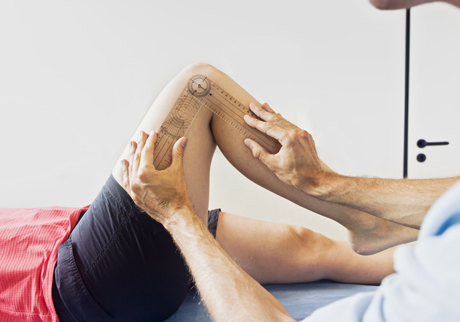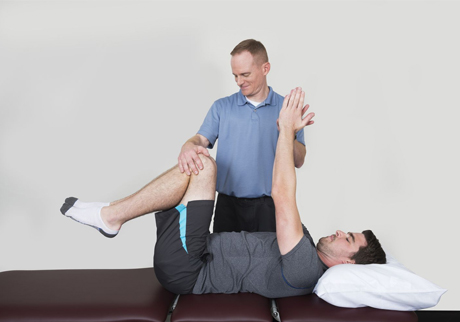
Frozen Shoulder
March 15, 2024
Carpal Tunnel Syndrome
March 16, 2024Physiotherapy Treatment for Cervical Spondylosis

1) Neck Mobility Exercises
Perform gentle neck mobility exercises to improve flexibility and reduce stiffness in the cervical spine.
- Neck Rotation: Slowly turn your head to the right as far as comfortable, then return to the center and repeat on the left side. Perform 10 repetitions on each side.
- Neck Flexion and Extension: Gently nod your head forward (flexion) and then tilt it backward (extension). Repeat 10 times.
2) Strengthening Exercises
Strengthening the muscles around the neck and upper back can help provide support and stability to the cervical spine.
- Neck Retraction: Sit or stand with your back straight. Gently retract your chin inward, creating a double chin. Hold for 5 seconds, then release. Repeat 10 times.
- Shoulder Blade Squeeze: Sit or stand with your arms by your sides. Squeeze your shoulder blades together as if trying to hold a pencil between them. Hold for 5 seconds, then relax. Repeat 10 times.


3) Postural Correction
Perform gentle neck mobility exercises to improve flexibility and reduce stiffness in the cervical spine.
- Neck Rotation: Slowly turn your head to the right as far as comfortable, then return to the center and repeat on the left side. Perform 10 repetitions on each side.
- Neck Flexion and Extension: Gently nod your head forward (flexion) and then tilt it backward (extension). Repeat 10 times.
4) Range of Motion (ROM) Exercises
Perform range of motion exercises to improve flexibility and reduce pain associated with cervical spondylosis.
- Cervical Retraction: Sit or stand with your back straight. Slowly glide your head backward, bringing your chin towards your throat. Hold for 5 seconds, then return to the starting position. Repeat 10 times.
- Side Bending: Gently tilt your head to the right, bringing your ear towards your shoulder. Hold for 5 seconds, then return to the center and repeat on the left side. Perform 10 repetitions on each side.


5) Education and Ergonomic Advice
Provide education on proper ergonomics and lifestyle modifications to prevent exacerbation of symptoms.
- Encourage maintaining a neutral spine alignment during activities such as sitting, standing, and lifting.
- Advise on the use of supportive pillows and ergonomic workstations to reduce strain on the neck and upper back.
6) Modalities
Incorporate modalities such as heat therapy, cold therapy, or ultrasound as adjuncts to relieve pain and inflammation as prescribed by a physiotherapist.


7) Progression and Follow-up
Regularly reassess the patient's progress and adjust the treatment plan accordingly. Gradually increase the intensity and duration of exercises as tolerated. Follow up with the physiotherapist as needed for ongoing support and guidance.



